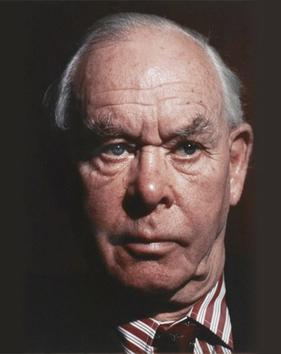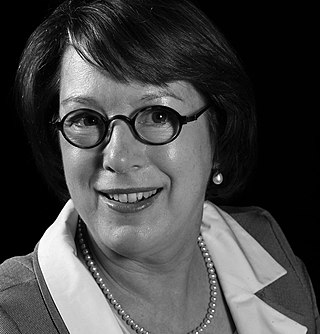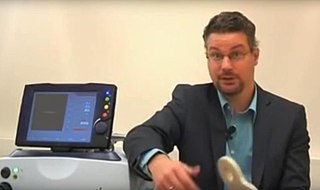Related Research Articles
Attachment disorder is a broad term intended to describe disorders of mood, behavior, and social relationships arising from unavailability of normal socializing care and attention from primary care giving figures in early childhood. Such a failure would result from unusual early experiences of neglect, abuse, abrupt separation from caregivers between three months and three years of age, frequent change or excessive numbers of caregivers, or lack of caregiver responsiveness to child communicative efforts resulting in a lack of basic trust. A problematic history of social relationships occurring after about age three may be distressing to a child, but does not result in attachment disorder.

Attachment theory is a psychological, evolutionary and ethological theory concerning relationships between humans. The most important tenet is that young children need to develop a relationship with at least one primary caregiver for normal social and emotional development. The theory was formulated by psychiatrist and psychoanalyst John Bowlby.

Edward John Mostyn Bowlby, CBE, FBA, FRCP, FRCPsych was a British psychologist, psychiatrist, and psychoanalyst, notable for his interest in child development and for his pioneering work in attachment theory. A Review of General Psychology survey, published in 2002, ranked Bowlby as the 49th most cited psychologist of the 20th century.
Human bonding is the process of development of a close interpersonal relationship between two or more people. It most commonly takes place between family members or friends, but can also develop among groups, such as sporting teams and whenever people spend time together. Bonding is a mutual, interactive process, and is different from simple liking. It is the process of nurturing social connection.
Mary Dinsmore Ainsworth was an American-Canadian developmental psychologist known for her work in the development of the attachment theory. She designed the strange situation procedure to observe early emotional attachment between a child and its primary caregiver.
In psychology, an affectional bond is a type of attachment behavior one individual has for another individual, typically a caregiver for her or his child, in which the two partners tend to remain in proximity to one another. The term was coined and subsequently developed over the course of four decades, from the early 1940s to the late 1970s, by psychologist John Bowlby in his work on attachment theory. The core of the term affectional bond, according to Bowlby, is the attraction one individual has for another individual. The central features of the concept of affectional bonding can be traced to Bowlby's 1958 paper, "The Nature of the Child's Tie to his Mother".

Attachment in children is "a biological instinct in which proximity to an attachment figure is sought when the child senses or perceives threat or discomfort. Attachment behaviour anticipates a response by the attachment figure which will remove threat or discomfort". Attachment also describes the function of availability, which is the degree to which the authoritative figure is responsive to the child's needs and shares communication with them. Childhood attachment can define characteristics that will shape the child's sense of self, their forms of emotion-regulation, and how they carry out relationships with others. Attachment is found in all mammals to some degree, especially primates.
Cupboard love is a popular learning theory of the 1950s and 1960s based on the research of Sigmund Freud, Anna Freud, Melanie Klein and Mary Ainsworth. Rooted in psychoanalysis, the theory speculates that attachment develops in the early stages of infancy. This process involves the mother satisfying her infant's instinctual needs, exclusively. Cupboard love theorists conclude that during infancy, our primary drive is food which leads to a secondary drive for attachment.

Maternal deprivation is a scientific term summarising the early work of psychiatrist and psychoanalyst John Bowlby on the effects of separating infants and young children from their mother. Although the effect of loss of the mother on the developing child had been considered earlier by Freud and other theorists, Bowlby's work on delinquent and affectionless children and the effects of hospital and institutional care led to his being commissioned to write the World Health Organization's report on the mental health of homeless children in post-war Europe whilst he was head of the Department for Children and Parents at the Tavistock Clinic in London after World War II. The result was the monograph Maternal Care and Mental Health published in 1951, which sets out the maternal deprivation hypothesis.
Attachment-based therapy applies to interventions or approaches based on attachment theory, originated by John Bowlby. These range from individual therapeutic approaches to public health programs to interventions specifically designed for foster carers. Although attachment theory has become a major scientific theory of socioemotional development with one of the broadest, deepest research lines in modern psychology, attachment theory has, until recently, been less clinically applied than theories with far less empirical support. This may be partly due to lack of attention paid to clinical application by Bowlby himself and partly due to broader meanings of the word 'attachment' used amongst practitioners. It may also be partly due to the mistaken association of attachment theory with the pseudo-scientific interventions misleadingly known as attachment therapy. The approaches set out below are examples of recent clinical applications of attachment theory by mainstream attachment theorists and clinicians and are aimed at infants or children who have developed or are at risk of developing less desirable, insecure attachment styles or an attachment disorder.
The differential susceptibility theory proposed by Jay Belsky is another interpretation of psychological findings that are usually discussed according to the diathesis-stress model. Both models suggest that people's development and emotional affect are differentially affected by experiences or qualities of the environment. Where the Diathesis-stress model suggests a group that is sensitive to negative environments only, the differential susceptibility hypothesis suggests a group that is sensitive to both negative and positive environments. A third model, the vantage-sensitivity model, suggests a group that is sensitive to positive environments only. All three models may be considered complementary, and have been combined into a general environmental sensitivity framework.
Mary Main was an American psychologist notable for her work in the field of attachment. A Professor at the University of California Berkeley, Main is particularly known for her introduction of the 'disorganized' infant attachment classification and for development of the Adult Attachment Interview and coding system for assessing states of mind regarding attachment. This work has been described as 'revolutionary' and Main has been described as having 'unprecedented resonance and influence' in the field of psychology.
Patricia McKinsey Crittenden is an American psychologist known for her work in the development of attachment theory and science, her work in the field of developmental psychopathology, and for creation of the Dynamic-Maturational Model of Attachment and Adaptation (DMM).
Video feedback interventions are used in health and social care situations. Typically a "guider" helps a client to enhance communication within relationships. The client is guided to analyse and reflect on video clips of their own interactions. Applications include a caregiver and infant, and other education and care home interactions. Video feedback interventions have also been used where concerns have been expressed over possible parental neglect in cases where the focus child is aged 2–12, and where the child is not the subject of a child protection plan.

Ineke Sluiter is a Dutch classicist and professor of Greek Language and Literature at Leiden University since 1998. Her research focuses on language, literature, and public discourse in classical antiquity. She was a winner of the 2010 Spinoza Prize. Sluiter has been president of the Royal Netherlands Academy of Arts and Sciences since June 2020, and previously served as vice president from 2018 to 2020.

Marinus H. "Rien" van IJzendoorn is professor of human development and one of the co-leaders of Generation R at the Erasmus University Rotterdam. His work has focussed on the social, psychological, and neurobiological determinants of parenting and child development, with special emphasis on attachment, emotion regulation, differential susceptibility hypothesis, and child maltreatment.

Josine Henriëtte Blok is a Dutch classical scholar. She has been a professor of Ancient History and Classical Civilisation at Utrecht University since 2001 up until 2019.

Andreas"André"Aleman is a Dutch neuroscientist and professor of cognitive neuropsychiatry at the University Medical Center Groningen and the University of Groningen.

Eveline Crone is a Dutch professor of cognitive neuroscience and developmental psychology at Leiden University. Her research focuses on risky behaviors in adolescent humans during puberty and examines the function of those risks. For her research in adolescent brain development and behaviour, she was awarded the Spinoza Prize, the highest recognition for Dutch scientists, in 2017.
The dynamic-maturational model of attachment and adaptation (DMM) is a biopsychosocial model describing the effect attachment relationships can have on human development and functioning. It is especially focused on the effects of relationships between children and parents and between reproductive couples. It developed initially from attachment theory as developed by John Bowlby and Mary Ainsworth, and incorporated many other theories into a comprehensive model of adaptation to life's many dangers. The DMM was initially created by developmental psychologist Patricia McKinsey Crittenden and her colleagues including David DiLalla, Angelika Claussen, Andrea Landini, Steve Farnfield, and Susan Spieker.
References
- 1 2 "Vici awards 2009". Netherlands Organisation for Scientific Research. 16 August 2013. Retrieved 13 June 2023.
- ↑ Personal website Marian Bakermans-Kranenburg
- 1 2 3 "Dr. Marian Bakermans-Kranenburg benoemd tot hoogleraar op het gebied van Genen en omgeving in de gezinsopvoeding" (in Dutch). Leiden University. 18 September 2007. Retrieved 11 January 2016.
- ↑ Personal website Marian Bakermans-Kranenburg
- ↑ "Marian Bakermans-Kranenburg". Royal Netherlands Academy of Arts and Sciences . Retrieved 14 June 2023.
- ↑ "ERC Advanced Grants 2014 Results" (PDF). European Research Council. 3 June 2015. Retrieved 11 January 2016.
- ↑ "Bloeit door ingrijpen het vadergevoel op?" (in Dutch). Leiden University. 22 April 2015. Retrieved 13 June 2023.
- ↑ "HCR Clarivate Analytics". ThomsonReuters.com. Archived from the original on 5 December 2016. Retrieved 7 September 2017.
- ↑ "Eregalerij 2016". Universiteit Leiden. Retrieved 7 September 2017.
- ↑ "(certificate)" (PDF). MarinusVanijzendoorn.nl. Retrieved 7 September 2017.
- ↑ "Honorary Doctorate". University of Lund in Sweden. Retrieved 13 June 2023.